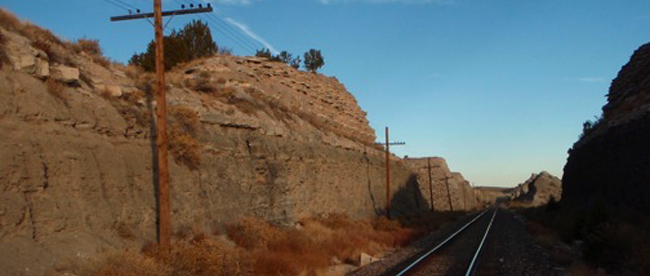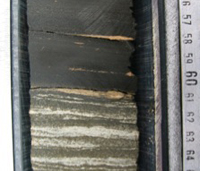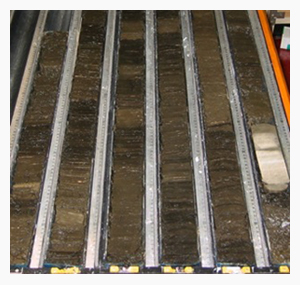The Cenomanian-Turonian Boundary


The C-T GSSP at Rock Canyon, Pueblo, Colorado. One of the greatest places on Earth.
The mid-Cretaceous Nitrogen Cycle
Greenhouse intervals of the mid-Cretaceous are subject to transient episodes of expanded anoxic conditions referred to as ‘Oceanic Anoxic Events’ (OAEs). These events have a unique expression with respect to the nitrogen cycle. Widespread anoxia fosters the loss of nutrient nitrogen via nitrate reduction and more efficient recycling of phosporous. The result is an ocean that is, on average, phosphorous replete and nitrogen limited, making biological nitrogen fixation a favorable process.

Black shale and organic-rich winnowed foram sand from ODP Leg 207 Demerara Rise.
My work on the Cenomanian-Turonian OAE 2 and the nitrogen isotopic record of bulk sediments and porphyrins (nitrogenous chlorophyll derivatives) confirms the N-fixation hypothesis. OAE 2 is very important because it is linked to a significant input of carbon dioxide to the atmosphere and represents a test case of the biogeochemical response to addition of carbon to the atmosphere.
See section on Chlorophyll derivatives for more details.
Collaborators: Micael A. Arthur and Katherine H. Freeman (PSU)
Funding for initial Cretaceous black shale work was funded by a post-Cruise grant to C. Junium and M. Arthur. Continuing funding was provided by NSF funding to M. Arthur and K. Freeman and by NASA via the Penn State Astrobiology Research Center.

The JOIDES Resolution on site on the Demerara Rise.
Orbital Tuning of the Turonian N-Cycle
I am also involved in a project examining relationships between nitrogen cycle dynamics and orbital forcing in the Turonian.
Collaborators: Stephen Meyers (Wisconsin, Madison) and Michael A. Arthur (PSU)


That is me with my hands on the Codell Sandstone in Pueblo, CO. The Codell SS was deposited during a rapid basin-ward stepping of the shore line. This regression is globally correlated and is of probable eustatic origin. Expansion of a small ice-sheet on the interior of Antarctica has been suggested as the mechanism for this sea-level drop. My work on the mid-Turonian supports this hypothesis. More to come on this soon.
